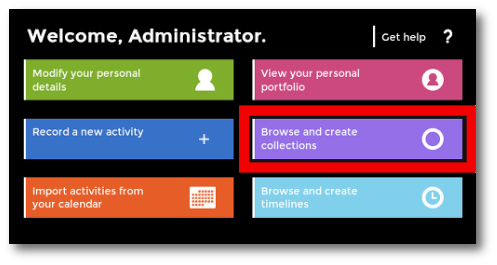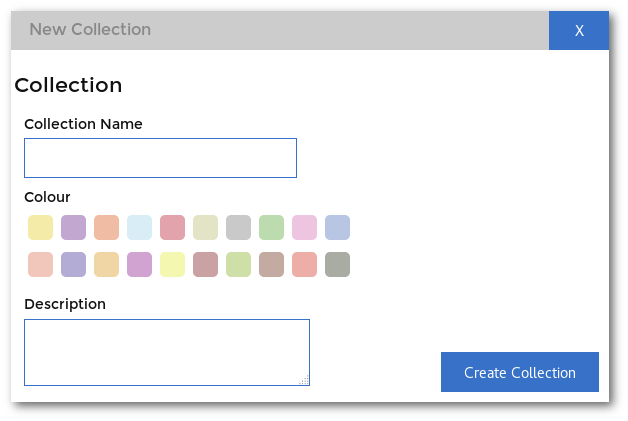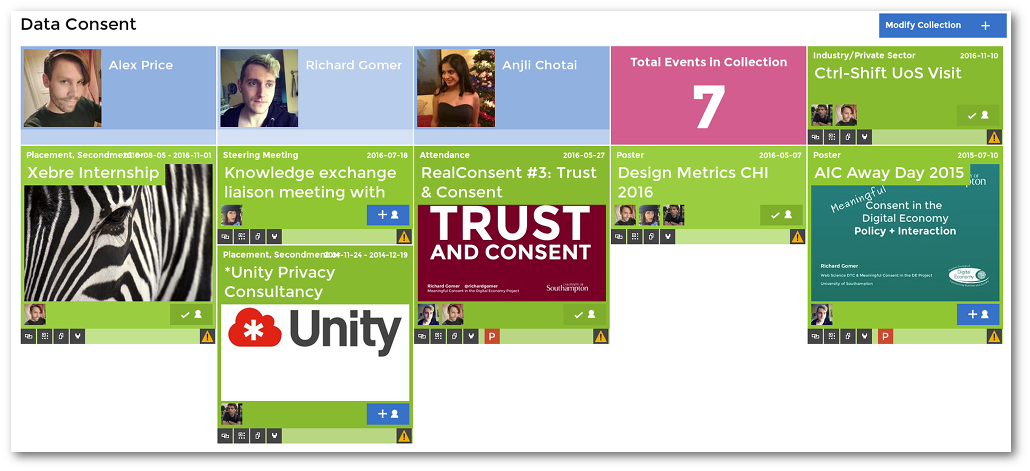Creating a collection of activities
Collections provide a simple way to group related activities together and can be used to keep track of an emerging case study, or just to keep similar activities together. These collections can be private, or shared between users.
How does it work?
Add a collection
Access your collections by using the link in the navigation box at the top of the activity browser:

It's also possible to access collections from the search box.

Give your collection a memorable name and description so other people can identify it later on.
Edit an existing collection
Before you can add activities to a new collection or edit an existing one, you will first need to open the collection and the click on the blue 'Modify Collection' button.
Once you have enabled modifications, you can simply drag and drop activities and people into the collection from elsewhere in the portfolio. This is easiest to do if you open a second tab in your browser, then snap your collection to one half of the screen and the activity browser to the other half, allowing you to drag and drop between the two tabs.

It's simplest to open a second browser window, then you can easily drag and drop activities into your collection.
What can I use collections for?
Collections provide a convenient way to group activities and people together, and they can be shared them with other people by sending them the URL (this can be found by opening the collection you want to share):
You can find the URL for your collection by opening it and copying the web address.
Collections are useful for constructing a narrative between certain people and activities, or for organising activities in a way which is more meaningful to use as a talking point.




